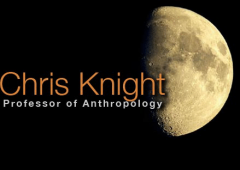The chief value of the study of human origins is that it nails the myth that ‘no revolution can ever change human nature’. It shows, on the contrary, that everything distinctively human about our nature – our ability to speak, to see ourselves as others see us, to aspire to act on moral principle – has come to prevail in our species thanks precisely to the greatest revolution in history, ‘the revolution which worked’.
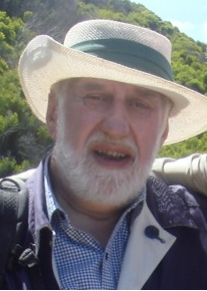 Palaeolithic archaeologist Paul Mellars (pictured left at Blombos Cave, South Africa) argues that distinctively human language, mind and society emerged during a revolution – ‘the human revolution’ – accomplished by our ancestors somewhere between 70,000 and 200,000 ago.
Palaeolithic archaeologist Paul Mellars (pictured left at Blombos Cave, South Africa) argues that distinctively human language, mind and society emerged during a revolution – ‘the human revolution’ – accomplished by our ancestors somewhere between 70,000 and 200,000 ago.
Ian Watts is the ochre specialist at Blombos Cave, South Africa,  where much of our earliest evidence for symbolic culture has recently been found. Ian (right) was the first archaeologist to point out that ‘the human revolution’ – formerly associated with the European Upper Palaeolithic and attributed to a chance genetic mutation – was in fact the culmination of a Middle Stone Age process of natural and sexual selection associated with the emergence of Homo sapiens in Africa [C. Knight, C. Power & I. Watts, The human symbolic revolution. Cambridge Archaeological Journal 5/1 (1995): 75-114].
where much of our earliest evidence for symbolic culture has recently been found. Ian (right) was the first archaeologist to point out that ‘the human revolution’ – formerly associated with the European Upper Palaeolithic and attributed to a chance genetic mutation – was in fact the culmination of a Middle Stone Age process of natural and sexual selection associated with the emergence of Homo sapiens in Africa [C. Knight, C. Power & I. Watts, The human symbolic revolution. Cambridge Archaeological Journal 5/1 (1995): 75-114].
The Darwinian component of what seemed at the time Ian’s highly controversial theory is today known as the Female Cosmetic Coalitions model 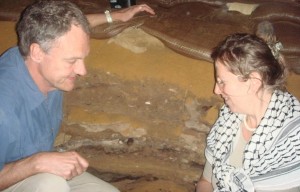 and was developed by Camilla Power (pictured left with Chris Henshilwood in Blombos Cave) while she was researching under the supervision of Leslie Aiello at University College London. Thanks largely to the work of Chris Henshilwood and his team, the ochre crayons, shell ornaments and other cosmetic items found at Middle Stone Age sites such as Blombos are today widely accepted as evidence for some of the world’s earliest symbolic traditions. The Female Cosmetic Coalitions model is currently the only attempt to explain these findings on a Darwinian basis. A point in its favour is that it accurately predicted the archaeological discoveries before they were made [C. Power, ‘Sexual selection models of the emergence of symbolic communication: why they should be reversed’, in R. Botha & C. Knight (eds), The Cradle of Language (2009), Oxford University Press, pp. 257-280].
and was developed by Camilla Power (pictured left with Chris Henshilwood in Blombos Cave) while she was researching under the supervision of Leslie Aiello at University College London. Thanks largely to the work of Chris Henshilwood and his team, the ochre crayons, shell ornaments and other cosmetic items found at Middle Stone Age sites such as Blombos are today widely accepted as evidence for some of the world’s earliest symbolic traditions. The Female Cosmetic Coalitions model is currently the only attempt to explain these findings on a Darwinian basis. A point in its favour is that it accurately predicted the archaeological discoveries before they were made [C. Power, ‘Sexual selection models of the emergence of symbolic communication: why they should be reversed’, in R. Botha & C. Knight (eds), The Cradle of Language (2009), Oxford University Press, pp. 257-280].
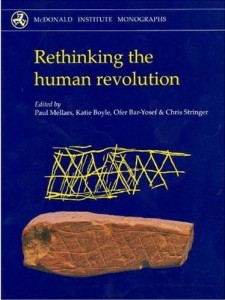 But what does it mean to speak of a ‘revolution’ so far back in our evolutionary past, long before history began? The challenges are immense and are exhaustively discussed in Rethinking the Human Revolution, edited by Paul Mellars, Katie Boyle, Ofer Bar-Yosef and Chris Stringer (McDonald Institute for Archaeological Research, 2007) and more recently in The Cradle of Language, edited by Rudolf Botha and Chris Knight (Oxford University Press, 2009).
But what does it mean to speak of a ‘revolution’ so far back in our evolutionary past, long before history began? The challenges are immense and are exhaustively discussed in Rethinking the Human Revolution, edited by Paul Mellars, Katie Boyle, Ofer Bar-Yosef and Chris Stringer (McDonald Institute for Archaeological Research, 2007) and more recently in The Cradle of Language, edited by Rudolf Botha and Chris Knight (Oxford University Press, 2009).
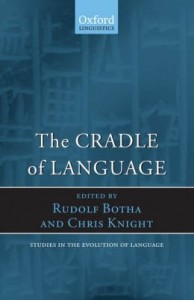 For an introduction to my own current thinking, see my ‘Language and revolutionary consciousness’ [chapter 7 in Alison Wray’s edited volume The Transition to Language (Oxford University Press, 2002)], ‘Honest fakes and language origins’ [in C. Whitehead, (ed), The Origin of Consciousness in the Social World, Imprint Academic, 2008, pp. 236-248] and ‘Language, ochre and the rule of law’ (the final chapter in The Cradle of Language volume).
For an introduction to my own current thinking, see my ‘Language and revolutionary consciousness’ [chapter 7 in Alison Wray’s edited volume The Transition to Language (Oxford University Press, 2002)], ‘Honest fakes and language origins’ [in C. Whitehead, (ed), The Origin of Consciousness in the Social World, Imprint Academic, 2008, pp. 236-248] and ‘Language, ochre and the rule of law’ (the final chapter in The Cradle of Language volume).
In fairness I should add that by no means all archaeologists believe in the human revolution. One frequently cited 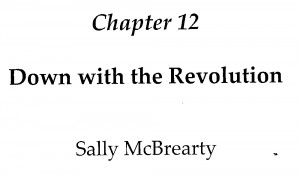 dissenting contribution was entitled ‘The revolution that wasn’t’ (Sally McBrearty and Alison Brooks, Journal of Human Evolution 39, 453-563, 2000). As if that wasn’t enough, a more recent update of the same argument defiantly proclaims ‘Down with the revolution’ (chapter 12 in Mellars et al., Rethinking the Human Revolution).
dissenting contribution was entitled ‘The revolution that wasn’t’ (Sally McBrearty and Alison Brooks, Journal of Human Evolution 39, 453-563, 2000). As if that wasn’t enough, a more recent update of the same argument defiantly proclaims ‘Down with the revolution’ (chapter 12 in Mellars et al., Rethinking the Human Revolution).
As a Marxist, it seems to me natural to expect slow, quantitative change to culminate from time to time in revolutionary breakthrough. 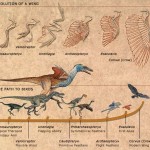 Yet in itself, of course, that’s no reason to accept the scientific validity of this concept in this particular case. While much remains uncertain, there are surely no a priori grounds for restricting the concept of revolution to recent historical times. Archaeologists investigating the origins of farming routinely speak of the ‘Neolithic revolution’.
Yet in itself, of course, that’s no reason to accept the scientific validity of this concept in this particular case. While much remains uncertain, there are surely no a priori grounds for restricting the concept of revolution to recent historical times. Archaeologists investigating the origins of farming routinely speak of the ‘Neolithic revolution’. 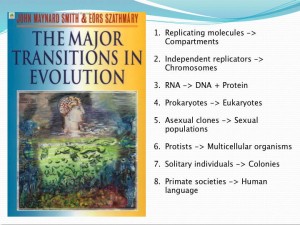 An event of this kind need not be telescoped into a brief period: what matters is that gradual evolution culminates in revolutionary change. Scientists agree that on a geological timescale, the emergence of language-using Homo sapiens qualifies as a ‘punctuation event’ or ‘major transition’ in the history of life on earth. The classic text here is The Major Transitions in Evolution by John Maynard Smith and Eors Szathmary (W. H. Freeman, 1995).
An event of this kind need not be telescoped into a brief period: what matters is that gradual evolution culminates in revolutionary change. Scientists agree that on a geological timescale, the emergence of language-using Homo sapiens qualifies as a ‘punctuation event’ or ‘major transition’ in the history of life on earth. The classic text here is The Major Transitions in Evolution by John Maynard Smith and Eors Szathmary (W. H. Freeman, 1995).
 Alison Brooks (pictured left) is an eminent archaeologist well-known for her opposition to the theory that there was a ‘human revolution’. She has very effectively poured scorn on the naive idea of a cognitive mutation responsible for telescoping the emergence of language and symbolic behaviour into a single dramatic moment. The African archaeological record, she points out, suggests a much more gradual process of behavioural and cognitive change. At the ‘Cradle of Language’ conference held in Stellenbosch in 2006, I asked Alison whether the two opposed camps – for and against the whole idea of a ‘human revolution’ – might settle on a compromise. Setting aside the idea of a sudden mutation, would she agree that on a geological timescale, the emergence of language-using Homo sapiens was a revolutionary event? ‘On that timescale’, Alison replied without hesitation, ‘yes’.
Alison Brooks (pictured left) is an eminent archaeologist well-known for her opposition to the theory that there was a ‘human revolution’. She has very effectively poured scorn on the naive idea of a cognitive mutation responsible for telescoping the emergence of language and symbolic behaviour into a single dramatic moment. The African archaeological record, she points out, suggests a much more gradual process of behavioural and cognitive change. At the ‘Cradle of Language’ conference held in Stellenbosch in 2006, I asked Alison whether the two opposed camps – for and against the whole idea of a ‘human revolution’ – might settle on a compromise. Setting aside the idea of a sudden mutation, would she agree that on a geological timescale, the emergence of language-using Homo sapiens was a revolutionary event? ‘On that timescale’, Alison replied without hesitation, ‘yes’.
Dominance and resistance
If we go back far enough in time, our ancestors are likely to have lived under social arrangements not radically different from those of today’s monkeys and apes. 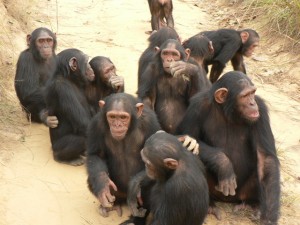 There is now a vast literature on such topics, but for me the classic texts remain Franz de Waal’s Chimpanzee Politics (Allen & Unwin 1982), Jane Goodall’s The Chimpanzees of Gombe (Harvard University Press, 1986) and Robin Dunbar’s Primate Social Systems (Croom Helm, 1988). Despite much variation, primate social systems share one feature in common. They are based on what is called ‘dominance’, defined as the ability to use or threaten violence to displace others from a contested position or from access to a valued resource. Life in ape society will typically be hierarchical and politically unstable, with alliances mostly opportunistic and rivals struggling for dominance at one another’s expense. And wherever dominance is momentarily enforced, those suffering the effects are likely to band together in order to fight back.
There is now a vast literature on such topics, but for me the classic texts remain Franz de Waal’s Chimpanzee Politics (Allen & Unwin 1982), Jane Goodall’s The Chimpanzees of Gombe (Harvard University Press, 1986) and Robin Dunbar’s Primate Social Systems (Croom Helm, 1988). Despite much variation, primate social systems share one feature in common. They are based on what is called ‘dominance’, defined as the ability to use or threaten violence to displace others from a contested position or from access to a valued resource. Life in ape society will typically be hierarchical and politically unstable, with alliances mostly opportunistic and rivals struggling for dominance at one another’s expense. And wherever dominance is momentarily enforced, those suffering the effects are likely to band together in order to fight back.
Superficially at least, these features of non-human primate society equally characterize ourselves as we struggle for power and resources in today’s politically divided world. But while the parallels may seem real enough, the differences are no less profound. However resigned we may be to unprincipled behaviour from our rulers on the political level, in our face-to-face interactions we still expect morality and accountability. From childhood on, we encourage one another to strive for approval and corresponding status by aspiring to principles the reverse of those appropriate either in a nonhuman primate context or in a Machiavellian contemporary political one. Esteem is gained less by threatening or deceiving those around us than by striving to act appropriately in the eyes of our peers, demonstrating our good faith and commitment to shared goals. (For the distinction between primate-style ‘dominance’ and merit-based human ‘prestige’, see Henrich, J. & Gil-White, F. J., ‘The evolution of prestige. Freely conferred deference as a mechanism for enhancing the benefits of cultural transmission’. Evolution and Human Behaviour 22 [2001]: 165-196).
Hunter-gatherers as revolutionaries
What applies to humans everywhere in their face-to-face relationships applies in particular to hunters and gatherers, whose egalitarian traditions may be particularly informative about the challenges faced by our ancestors before class society arose. 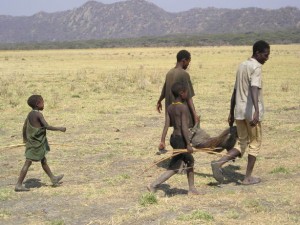 The photograph on the left was taken while I was a guest among Hadza bow-and-arrow hunters in Tanzania in 2003. Having killed a bush-pig, the men are carrying the meat back to camp where it will be cut up and properly shared.
The photograph on the left was taken while I was a guest among Hadza bow-and-arrow hunters in Tanzania in 2003. Having killed a bush-pig, the men are carrying the meat back to camp where it will be cut up and properly shared.
Hunter-gatherers can be as competitive as anyone, but they are under pressure to compete in a paradoxical way. The struggle is to be perceived as non-competitive – and the best way to succeed in this is to be genuinely so. Esteem and corresponding status in a hunter-gatherer band goes not to the most dominant or assertive but to those best at establishing what anthropologist Christopher Boehm terms ‘reverse-dominance’, measured as the ability to join with others in transcending internal conflict, displaying generosity and suppressing attempts at dominance by selfish individuals. If you’re a socialist or anarchist, such norms will probably be familiar to you – in principle at least. In Boehm’s refreshingly political account of the ‘human revolution’, the project of establishing an egalitarian hunter-gatherer ethos meant not just modifying but systematically reversing the logic of primate dominance which had previously prevailed. In short, it meant turning the world upside-down.
African origins
Our species emerged in Africa some 200,000 years ago. From this time onwards, intimations of art and symbolic culture begin to appear in the archaeological record, sporadically at first but then with increasing intensity and regularity. Our earliest evidence for art and symbolic culture is the recent discovery of pieces of red ochre which seem to have been selected and shaped to produce clear outlines of brilliant red colour on the surface of the human body. As if to exclude any doubt as to their makers’ artistic capacities, a number of ochre pieces from Middle Stone Age sites such as Blombos Cave, South Africa, have themselves been etched with abstract designs (see illustration).  In addition to these carefully selected and preserved ochre pigments, archaeologists have found shell beads apparently used as necklaces or other personal ornaments.
In addition to these carefully selected and preserved ochre pigments, archaeologists have found shell beads apparently used as necklaces or other personal ornaments.
What has often been termed ‘the symbolic explosion’ – a spectacular efflorescence of art and symbolic culture – took off in parts of Africa around 100,000 years ago, spreading to Asia and then Australia from 60,000 years ago and eventually reaching Europe some 40,000 years ago.
Darwinism’s greatest challenge?
Can natural selection can explain this ‘major transition’ in the history of life on earth? Few educated people nowadays doubt that Darwin’s theory can explain the evolution of our anatomy and physiology. But can it also explain language and mind? And what about moral awareness? Darwin himself recognised that such topics present theoretical challenges, and the difficulties have remained with us to this day.
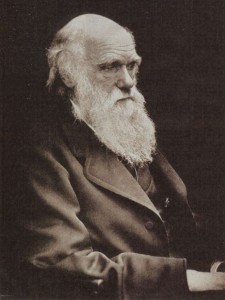 Darwinism in the twenty-first century is no longer ‘just a theory’. The facts of evolution by natural selection are about as well established as the existence of gravity or the fact that the earth moves. This makes it all the more striking that evolutionary theory has to date failed utterly to explain what might seem a simple problem – the emergence of language in our species. Since the early 1990s, there has been a plethora of speculative hypotheses, but none has commanded more than transient or minority support.
Darwinism in the twenty-first century is no longer ‘just a theory’. The facts of evolution by natural selection are about as well established as the existence of gravity or the fact that the earth moves. This makes it all the more striking that evolutionary theory has to date failed utterly to explain what might seem a simple problem – the emergence of language in our species. Since the early 1990s, there has been a plethora of speculative hypotheses, but none has commanded more than transient or minority support.
Certain evolutionary psychologists – most prominently Steven Pinker – argue that language is just one more complex biological adaptation, on the model of, say, stereoscopic vision in primates or echolocation in bats. Since it’s an adaptation, it must have evolved the way all adaptations do, by standard processes of Darwinian natural selection. Pinker’s idea is superficially appealing, not least because it tells Darwinian theorists that they have nothing to worry about. As far as Darwinism is concerned, the existence of language poses no special theoretical challenge.
The problem is that despite Pinker’s optimism, neither he nor any of his colleagues has to date succeeded in producing an actual theory along these lines. For Darwin’s principle of ‘descent with modification’ to work, there must be an appropriate starting point. Let’s imagine some feature of nonhuman primate cognition or communication that displayed certain language-like properties. Piecemeal cumulative modification might then lead eventually to language. But the problem is that no such point of departure exists. It’s not just that chimpanzees, for example, haven’t got very far toward the evolution of language. If by ‘language’ we mean a system involving arbitrary symbols and some kind of grammar, they haven’t even started down that road.
Perhaps the simplest conceivable form of language might be one in which pointing gestures were reciprocally and intentionally used. Remarkably, as it turns out, wild-living apes don’t even do this. So the question is posed: why not? What exactly is the problem? Could it be that making a pointing gesture with the arm or finger is not as simple as it seems? Is it really a complex operation posing sophisticated computational challenges beyond the capabilities of an ape’s limited brain?
There is another possibility. Maybe it’s simply that apes lack sufficient incentive to point things out for one another in the way humans spontaneously do. I prefer this explanation because it tallies with the primatological evidence. It turns out that chimpanzees are perfectly capable of a limited kind of ‘pointing’ – provided it suits their own interests. 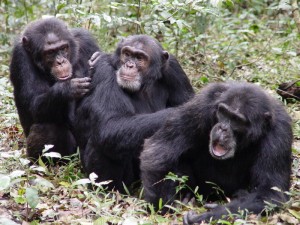 Hence when a chimpanzee is being groomed by a companion, it will sometimes scratch at a particular spot on its own body to indicate just where the grooming should be directed. Field primatologists Simone Pika and John Mitani [‘The directed scratch: evidence for a referential gesture in chimpanzees?’ in Rudolf Botha and Chris Knight (eds), The Prehistory of Language (2009)] regard this as possibly the nearest apes get in the wild to intentional communication and hence to a rudimentary form of language. For pointing to become more elaborate and generalized, it would have to become less selfish. True pointing would mean directing someone else’s attention to some feature of the environment in a socially helpful way, or simply as a matter of shared interest.
Hence when a chimpanzee is being groomed by a companion, it will sometimes scratch at a particular spot on its own body to indicate just where the grooming should be directed. Field primatologists Simone Pika and John Mitani [‘The directed scratch: evidence for a referential gesture in chimpanzees?’ in Rudolf Botha and Chris Knight (eds), The Prehistory of Language (2009)] regard this as possibly the nearest apes get in the wild to intentional communication and hence to a rudimentary form of language. For pointing to become more elaborate and generalized, it would have to become less selfish. True pointing would mean directing someone else’s attention to some feature of the environment in a socially helpful way, or simply as a matter of shared interest.
What prevents apes from doing this? The obstacles are surely not cognitive. Wild-living apes receive little practice in pointing – that is, they don’t come under those particular selection pressures – because under their social circumstances it’s not worth the effort. Relatively selfish animals, or those willing to cooperate only in restricted ways, will generally choose to keep their own secrets – their own hard-won knowledge – to themselves. When they discover something interesting about their environment, their first concern will be to make use of that information for themselves. If apes don’t point, as evolutionary anthropologist Michael Tomasello explains [‘Why don’t apes point? In N. J. Enfield and S. C. Levinson (eds), Roots of Human Sociality, Berg 2006], it’s because they are insufficiently cooperative to make that strategy of communication worthwhile. What applies to so basic an activity as pointing will apply even more emphatically to more complex linguistic developments. In the absence of some social breakthrough, language will not even begin to evolve.
Pinker insists that language is a biological adaptation in the sense that, say, stereoscopic vision in primates is an adaptation. But stereoscopic vision confers benefits on us regardless of our social circumstances. The political environment can be competitive, co-operative or anything in between: depth vision will be adaptive anyway. But with language – as with pointing – this isn’t the case. Like coins or banknotes, words would be useless to us if no-one else used them or believed in them. While the brute facts of nature are true anyway, regardless of other people’s beliefs, facts such as word meanings – ‘social’ or ‘institutional’ facts – are hallucinatory products of collective agreement. Natural science inevitably fails us here: to understand social facts, we need the insights of Durkheim, Wittgenstein and Marx. But this doesn’t mean that Darwin’s theory must be diluted or abandoned. It just means that we need to know how the different philosophical paradigms – those of natural science on the one hand, sociology and anthropology on the other – fit together properly and interlock. We need a parsimonious, powerful and empirically testable ‘theory of everything’ – an explanation of the origins of human nature and culture taken as a whole, with the emergence of language situated in its proper context as part of this wider process.
Did language suddenly emerge?
This is where I differ from Noam Chomsky. Chomsky insists that language in our species is an innate biological faculty. Yet he also insists that language is ‘off the chart’ – so utterly unlike any animal system of communication as to render it immune to Darwinian explanation. The human language faculty did not evolve, he argues, but arose fully fledged in an instant. When asked how this might have happened, he admits that he doesn’t know. While some linguists and archaeologists accept Chomsky’s approach, others see it as bordering on creationism, inconsistent with the evidence and, in any event, theoretically unattractive since it presupposes laws of nature which are currently unknown.
Language and public trust
Inspired by Marx and Engels as much as by Darwin, my view is that gradualist and revolutionary accounts can be combined. Our innate capacity for language evolved gradually, but it took a revolution to liberate that potential. The most precious outcome of the revolution was the establishment of sufficient co-operation to enable language to work. My argument here is that words are cheap. Nothing connects them to reality: that’s part of the definition of a ‘symbol’. Signals of this kind are so prone to deceptive abuse that natural selection always rules out their invention or transmission. Outside human society, language cannot evolve. It lacks precedents in nature because under Darwinian social conditions – that is, in a world free of moral principle or law – there will always be insufficient honesty, hence insufficient trust.
A theory of everything?
If this perspective is accepted, it follows that there can be no such thing as ‘a theory of the origins of language’. Instead, what we need is a ‘theory of everything’ – a theory capable of explaining human cognition, communication and social co-operation taken as a whole. That is why my work focuses on topics that other specialists in human origins tend to ignore – topics such as sex and kinship, laughter and play, myth and ritual, dance and trance. To study such topics is to investigate how our hunter gatherer ancestors succeeded in managing and transcending conflict, forging relationships of egalitarianism, reciprocity and trust. It is to discover how our ancestors succeeded in liberating human potential – and began speaking to one another for the first time.
See also: The Science of Solidarity
See also various articles on the origins of language
